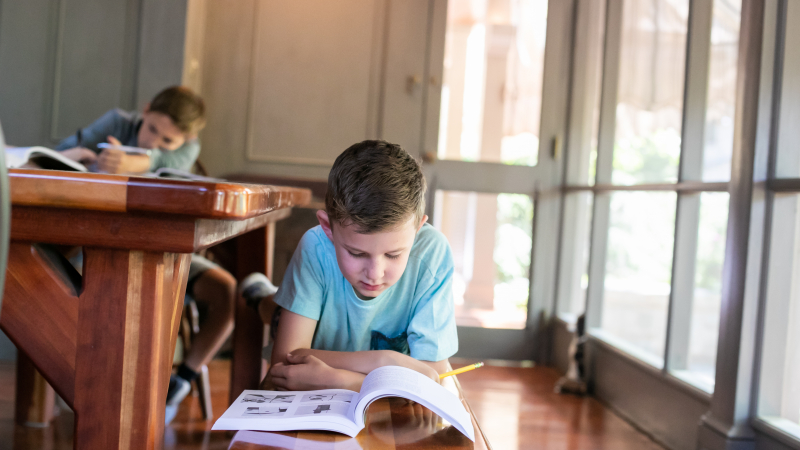What is a Living Book?

Storytelling, one of the oldest forms of teaching, is also one of the most effective for children. Not only does it improve literacy, it conveys cultural norms, moral truths, and ideas. That’s why Jesus used parables to teach the Gospel. He knew how to meet people where they were in life by using stories they could relate to.
As a homeschooler, you may have heard the term “living book” tossed around. Originally coined by Charlotte Mason, a British educator who started her own educational movement at the turn of the 20th century, it has trickled into other educational philosophies, including classical ed.
But what exactly constitutes a living book? Where can you find them? Why do you need them?
It might be easier to first describe what is NOT a living book. The clearest antithesis of the living book is a textbook. It is dry, shallow, and full of facts for fact's sake. It serves a purpose, of course, but it fills our brains with facts rather than feeding them with ideas. Other examples are books that use “dumbed-down” language or flat characters, what Charlotte Mason calls “twaddle.” Beach reads, graphic novels, and series with multiple authors are all excluded from the living book category. And I guarantee if you recognize a book’s character from TV, it won’t qualify.
So what does qualify? Here are four criteria for determining if a book is “living” or not:
It is written by one author who is passionate about the topic. Living books are narrative in nature but not necessarily fiction. They are written by someone who is knowledgeable about the topic. Someone who is so enthralled with the subject that they can use their own skills to bring it to life. They could be biographies like The Courage and Character of Theodore Roosevelt or historical fiction like Tirzah, or even picture books like Degas and the Little Dancer.
It is good literature. Ah, the perennial debate about what is good literature. Does it have to be written a long time ago for it to count? Does it have to have big words? Some might argue that Dr. Seuss has stood the test of time, while many debate that his books are silly and nonsensical. Good literature uses complex sentences and rich language. It is full of figurative speech to bring the story to life. Examples of good literature include Robinson Crusoe, Little House on the Prairie, and Animal Farm.
It encourages imagination. Have you ever been so engrossed in a book that you tune out the world around you? That’s when the author has done their job. Charlotte Mason used a “two-page test” to determine if a book encouraged imagination. If, after reading two pages of a book, the reader is not transported to another time and place, or is not immediately drawn into the action, then she should close the book and find another.
It feeds the mind. The mind is not a container to be filled up with facts but a living thing that needs to be fed with ideas. Living books should foster discussion rather than regurgitation of information. It should encourage children to think, question, and wonder.
Reflect on these four criteria when choosing books for your homeschool. No matter what homeschool styles you embrace, a living library is important for a well-rounded education.
If you need a little extra help finding books to fill your shelves, we’ve got you covered. From the beginning, Veritas Press has been known for its excellent book lists. Laurie Detweiler has led the curation of a catalog of living books that takes all of the hard work off of your plate.
If you’re looking for summer reading lists, we have one for K-2nd, 3rd-6th, and 7th-12th. We also have a comprehensive list of the books in all six Omnibus levels. Take one of the lists with you on your next trip to the library. You might find yourself swapping out your beach reads for some Omnibus Secondary books.






